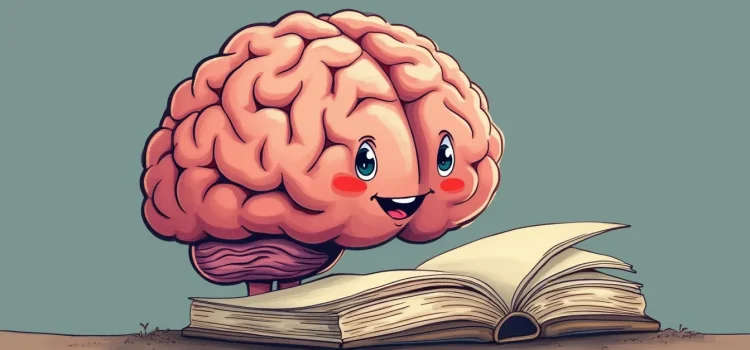
What happens in our brains when we learn to read? How do different writing systems shape our neural pathways?
In her book Proust and the Squid, Maryanne Wolf explains how the reading brain is made possible through neuroplasticity. Despite having no dedicated reading center, our brains rewire themselves in three profound ways.
Read on to explore how this remarkable adaptation changed human history and continues to shape our minds today.
The Reading Brain
As people invented writing systems and began to read, the human brain had to continuously adapt. Although it has no dedicated reading center, it does have neuroplasticity—the ability to rewire itself in response to experiences. For instance, when you learn a musical instrument, neuroplasticity makes it possible for you to develop “muscle memory” and get good at making music.
Wolf contends that the reading brain is made possible by three key steps of neuroplasticity: the brain’s ability to create new circuits by connecting older regions, its capacity to develop specialized areas for recognizing patterns (like letters), and its talent for making these processes automatic through practice. So, when ancient humans learned to read, their brains did something like this:
- Visual processing regions originally meant for recognizing objects, like birds or fruits, were repurposed to also recognize letters.
- New, specialized circuits evolved to connect these visual patterns (letters) to sounds and meanings.
- Existing memory and attention systems adapted to efficiently store and retrieve these learned connections, allowing reading to become automatic.
(Shortform note: While the brain can be divided into various regions and parts, many brain functions aren’t strictly localized within these areas. Neuroscientists have traditionally thought in terms of “centers,” like Broca’s area (a language center). But new evidence suggests that specialized areas often participate in networks of neural pathways distributed across the brain. For instance, neuroimaging studies have found that Broca’s area contributes to brain functions that handle nonlinguistic activity. It may also connect nonlinguistic brain functions with linguistic activity—showing that so-called “centers” aren’t always so clear-cut.)
Different writing systems require slightly different adaptations in the brain. Readers of Chinese, for example, develop stronger visual memory circuits due to the language’s character-based system, which requires memorization of thousands of complex visual symbols. In contrast, readers of Western alphabets develop stronger phonological (sound-processing) areas because alphabets rely on the connection between symbols and sounds. But all reading brains share a common pattern: They create new circuits by connecting and repurposing older brain structures.
And, according to Wolf, the neuroscience of reading reveals that our brains evolved not with fixed functions, but with the ability to change according to what we do. Reading is a remarkable example of this plasticity—we literally changed our brains through cultural invention. This has implications for how we think about the future of reading in the digital age.
| Neuroplasticity and Symbolic Systems The brain’s capacity for rewiring is profound—for example, stroke patients can sometimes regain lost functions when healthy regions take over for damaged areas, and blind individuals’ brains can repurpose visual cortex regions for processing touch and sound. This power of neuroplasticity suggests that Wolf’s argument—that neuroplasticity allowed the brain to develop an entirely new skill—could also be true for how we learn other symbolic systems, like graphic design or musical notation. For instance, the same three steps of neuroplasticity could explain how the brain learns the patterns of poker: Visual processing regions learn to recognize the symbols of suits (spades ♠, hearts ♥, clubs ♣, and diamonds ♦); numbers; and A, K, Q, and J (ace, king, queen, and jack). Specialized circuits develop to connect these symbols with their meanings, like the value they provide in a particular hand. Memory systems automate those connections, enabling the player to efficiently recognize and “read” what’s going on in a round of poker. And, just as different writing systems shape the brain differently, different symbolic systems (like those used in poker) would theoretically create distinct neural adaptations. For example, a professional musician learns to read and think using the symbols of musical notation (like notes, staves, and clefs). This may strengthen connections between the visual circuits that recognize those symbols and the auditory circuits that help her to produce the range of sounds and subtleties they represent. |






